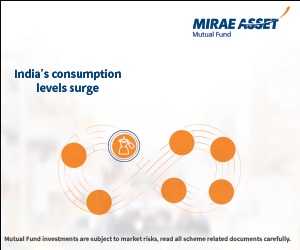The hows and whys of selecting a bank

Opening a savings account is worth your while only if you choose the correct bank. We list the factors to consider when doing so.
In today's times of fast lifestyles and rising inflation, it has become necessary to save money every month and also deposit it in a safe place. This 'safe place' is the savings bank account – it helps you deposit your spare cash and also earn interest on it. Most households in India have a savings bank account, with some spouses choosing to open joint bank accounts.
Even the Indian Government is urging all Indians to open bank accounts, even those below the poverty line, under the Pradhan Mantri Jan Dhan Yojana (PMJDY). After the demonetisation of Rs 1,000 and Rs 500 notes in November 2016, it is now viable to open and operate a saving account to be able to declare one's income and savings at the right time.
However, the decision to choose the best one is often fraught with many questions. So, how can you choose the best savings bank account and indeed, the best bank? Take a look at our handy guide to get you started:
Location
- How far or near the bank is from your home and/or office is a crucial factor. These days, many banks operate such that you do not need to step into a bank at all. But what happens if you need to go to the bank – maybe to get your money changed, or deposit a cheque, or even apply for a home loan? Your bank cannot be located geographically so far away from you that you find it difficult to make the time to visit the branch, or have to change two buses to get there. Make sure the bank is within one kilometres radius from your location.ATM usage terms
- Most banks today charge customers for withdrawing money after three tries per month. However, some other banks have unlimited free ATM withdrawals. This decision is entirely up to your withdrawal habits – if you are in the habit of withdrawing a large sum of money at the start of the month and running all your expenses from it, you may not need to visit the ATM that often. But if keep only some amount of money in your wallet and visit the ATM at least thrice a week, the ATM charges can be considerable. A key factor to consider is also the ATM network the bank has all over the country.Online services offered
- Banks today offer cutting edge technology in their products and services. You can open zero balance savings account, book fixed deposits and even pay your utility bills sitting at home with a finger on your mobile phone screen. Banking has become extremely easy and personalised, thus saving a lot of valuable time for customers. It bodes well to choose a bank that offers easy online access, 24/7 support and secure mobile banking apps to help with a variety of daily transactions. The bank's Internet presence should be such that you do not need to visit the bank personally for anything.Minimum balance requirement
- Check your preferred bank's minimum balance requirement per month. If you want to open a saving account only to keep aside your extra money, a zero balance savings account is best. As the name suggests, it does not have a minimum balance stipulation. However, this kind of bank account will have basic features and services. Other savings accounts have a minimum balance requirement – it is generally lower for nationalised banks (from Rs 2,000 to Rs 5,000 per month) than for private sector banks and foreign banks (from Rs 10,000 to Rs 25,000 per month). Needless to say, if your balance dips below the specified amount, you are penalised by the bank with maintenance fees.Interest rates offered
- A large part of your decision to choose one bank over another for your saving account has to do with the interest rate being offered on the savings deposit. Most banks in India offer 4% savings account interest rate, while some offer 6% or even 7%. Meanwhile, you should also check the interest rates on home loans and fixed deposits. The higher the savings account interest rate or interest on fixed deposits, the higher will be the size of your earnings. However, interest rates on home loans should be low.Ease of account opening
- As mentioned earlier, banks in India are making it very easy to open savings accounts. Even if you do not need to furnish hard copies of residential and personal proofs, you will still need to upload soft copies of the same on the bank's website when you apply for the account. Broadly, you will need:- Address proof: Passport/Aadhaar card/ration card/telephone bill/electricity bill
- Personal ID: Passport/PAN card/Aadhaar card/election card
- Passport size photographs: Minimum 2
- Account opening money: Cheque issued to the bank for an amount ranging from Rs 500 to Rs 10,000, depending on the bank.
Level of customer service
- With so many banks operational today, it is imperative that they offer the highest levels of tech support and customer service to one and all. While the private and foreign banks have been offering excellent customer service, some nationalised banks have been slow to catch up on this front. Apart from being cordial and helpful at the bank branch, executives must also be trained to answer queries quickly on the phone or over the banking app, and offer help at all hours.
Queries
-
What is the benefit of mutual fund STP
Aug 29, 2019
-
How much to invest to meet target amount of Rs 2 Crores
Aug 26, 2019
-
Can I achieve my financial goals with my current mutual fund investments
Aug 24, 2019
-
Can you tell me return of various indices
Aug 19, 2019
-
What would be the post tax return on different investments
Aug 18, 2019
-
Which Principal Mutual Fund scheme will be suitable for my retirement corpus
Aug 16, 2019
-
What is the minimum holding period for availing NCD interest
Aug 4, 2019
Top Performing Mutual Funds
Recommended Reading
Fund News
-
HDFC Mutual Fund launches HDFC CRISIL IBX Financial Services 3 to 6 Months Debt Index Fund
Apr 28, 2025 by Advisorkhoj Team
-
DSP Mutual Fund launches DSP Silver ETF Fund of Fund
Apr 28, 2025 by Advisorkhoj Team
-
Edelweiss Mutual Fund launches Edelweiss BSE Internet Economy Index Fund
Apr 25, 2025 by Advisorkhoj Team
-
Bajaj Finserv Mutual Fund launches Bajaj Finserv Nifty 50 Index Fund
Apr 25, 2025 by Advisorkhoj Team
-
SBI Mutual Fund launches SBI Income Plus Arbitrage Active FOF
Apr 23, 2025 by Advisorkhoj Team













